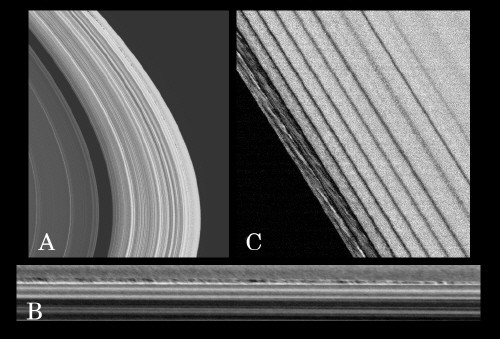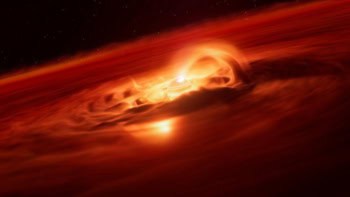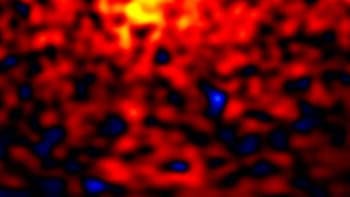Space scientists know more about Saturn than ever before thanks to the latest results from the Cassini mission. Researchers working on the joint NASA/ESA mission have just published eight new papers based on the first nine months of data from the spacecraft, which started to orbit Saturn last June. The papers report evidence for new moons and ring structures, as well as providing further information about the planet's magnetosphere and previously known moons.

Saturn’s rings — which are made up of ice particles contaminated with rock — have fascinated astronomers since Christiaan Huygens first observed them in the seventeenth century. Unlike the Voyager missions more than 20 years ago, which were “fly-by” missions, Cassini will orbit Saturn for at least four years.
The Cassini Imaging team, led by Carolyn Porco of the Space Science Institute in Boulder, Colorado, has observed new phenomena in Saturn’s rings such as “straw”, “mottled” and “ropy” structures, and new details inside the rings. Porco and co-workers have also discovered previously unknown narrow rings between the “A” and “F” rings. Moreover, by examining density waves in the rings created by the moons Atlas and Pan, they have been able to calculate the masses and orbits of these moons more accurately than before. The new results show that Atlas and Pan are both very porous (Science 307 1226).
Last year, Porco and co-workers found several new satellites that were all about five kilometres or less across. Now they have found that one of these (named Polydeuces) is a “Trojan” or companion moon of the larger moon Dione. Saturn is the only planet known to have Trojan moons. The team has also discovered that Phoebe, Saturn’s most outermost moon, may contain ice-rich material covered by a layer of darker, rocky material (Science 307 1237).
As Cassini approached Saturn one of its instruments, the Cosmic Dust Analyser, detected streams of tiny dust particles less than 20 nanometres across that were escaping from Saturn at speeds up to 100 kilometres per second. A team led by Sascha Kempf of the Max Planck Institute in Heidelberg in Germany has now found that most of these particles contain silicates, which implies that they are impurities from the icy ring material rather than the ice particles themselves (Science 307 1274).
A further five papers describe measurements of Saturn’s magnetosphere, with David Young of the Southwest Research Institute in San Antonio and colleagues presenting evidence for four distinct regions of the magnetosphere, each characterised by differences in their ion composition and bulk plasma properties. Meanwhile Michele Dougherty of Imperial College London and co-workers report that the “current sheet” within the magnetosphere is thinner and more extended than observed before.




